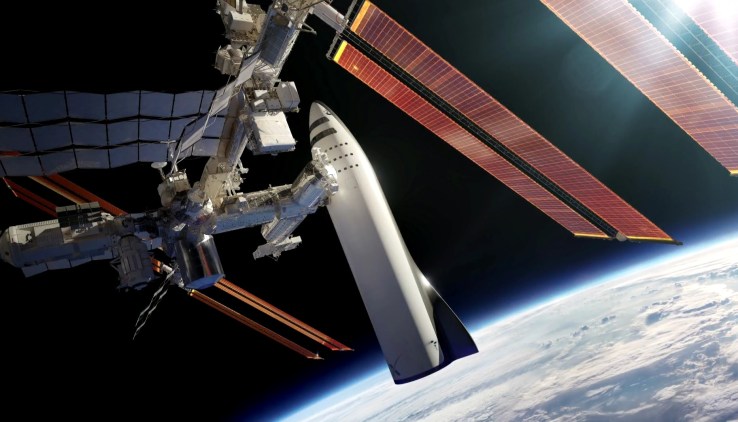Elon Musk banters and answers rocketry questions on Reddit

Elon Musk did an AMA on Reddit yesterday, and while he didn’t provide every missing detail on SpaceX’s ambitious BFR program, he was (as always) engaging and informative in a more general way. Here are the highlights of the Q&A.
SpaceX plans to put satellites around Mars before any manned mission
Musk’s talk at IAC a few weeks ago raised a lot of eyebrows — the rumored BFR, or “Big Fucking Rocket,” was documented at least in concept, as was a plan for colonizing Mars. But while the rosy hued predictions of a massive city resupplied by countless rockets was compelling, there’s a lot that has to happen first.
One step is putting SpaceX orbiters around Mars to collect the kind of specific data the company needs in order to do repeated landings. Asked if he has plans to launch multiple such satellites, Musk merely replied “yes,” confirming speculation but obviously not much more.
Considering the short timeline SpaceX is operating on in terms of crewed Mars missions, these satellites would likely have to be launched in the next couple years, well before a full-scale test of the BFR platform.
We need an interplanetary internet
Several users asked about problem of information exchange: often at more than 20 light-minutes away, Mars wouldn’t be easy to browse the web from.
After calling a user a nerd for fantasizing about the possibility of a space internet, Musk agreed that a new protocol or system would be necessary. Probably, he speculated, users on Mars would request websites or media and it would have to be relayed over a sort of interplanetary backbone to caching systems on or around the red planet.
 At nearer distances it wouldn’t be quite such a problem. “3 light-minutes at closest distance,” Musk wrote. “So you could Snapchat, I suppose. If that’s a thing in the future.”
At nearer distances it wouldn’t be quite such a problem. “3 light-minutes at closest distance,” Musk wrote. “So you could Snapchat, I suppose. If that’s a thing in the future.”
SpaceX “chickened out” on Raptor thrust
The Raptor engines that are being tested for interplanetary trips were once slated to have about 300 tons of thrust force, but reduced later to 170. One user asked why this was the case. Musk first answered simply that “we chickened out.”
In a more detailed follow-up answer, however, he explained that first, they were able to do so because the payload mass had decreased. But large, complex engines capable of major throttling put too many eggs in one basket, he implied; smaller engines capable of many stages of throttling are better for fiddly operations like vertical landings. They’ll be mostly forged, not 3D printed.
The company is focusing on reliability above all, he wrote in answer to a related question:
The flight engine design [compared with existing test versions] is much lighter and tighter, and is extremely focused on reliability. The objective is to meet or exceed passenger airline levels of safety. If our engine is even close to a jet engine in reliability, has a flak shield to protect against a rapid unscheduled disassembly and we have more engines than the typical two of most airliners, then exceeding airline safety should be possible.
Test flights for on-planet travel are planned
Some found Musk’s idea of using rockets to go from point to point on Earth rather unrealistic, but hey, why not at least try it? Musk said that full scale tests will begin in the next couple years, first with rockets staying low (a couple hundred kilometers) and eventually working their way up to orbital flights.
He noted that multiple rocket stages will be continue to be necessary, at least on this planet: “Earth is the wrong planet for single stage to orbit. No problemo on Mars.”
There’s a “kinda weird” space tanker coming
In the IAC presentation, Musk showed two BFRs refueling by putting their engine ends together and having fuel flow between them.
At first, Musk explained, the BFR tankers will just be the same thing as passenger and cargo versions of the craft, but without a payload in the front. But the company is working on dedicated tanker craft with “an extremely high full to empty mass ratio” — by which he means they’ll be mostly empty space.
“Warning: it will look kinda weird,” he added.
Check out the rest of Musk’s answers, including a few I thought a little too technical to include here, over at r/space.
